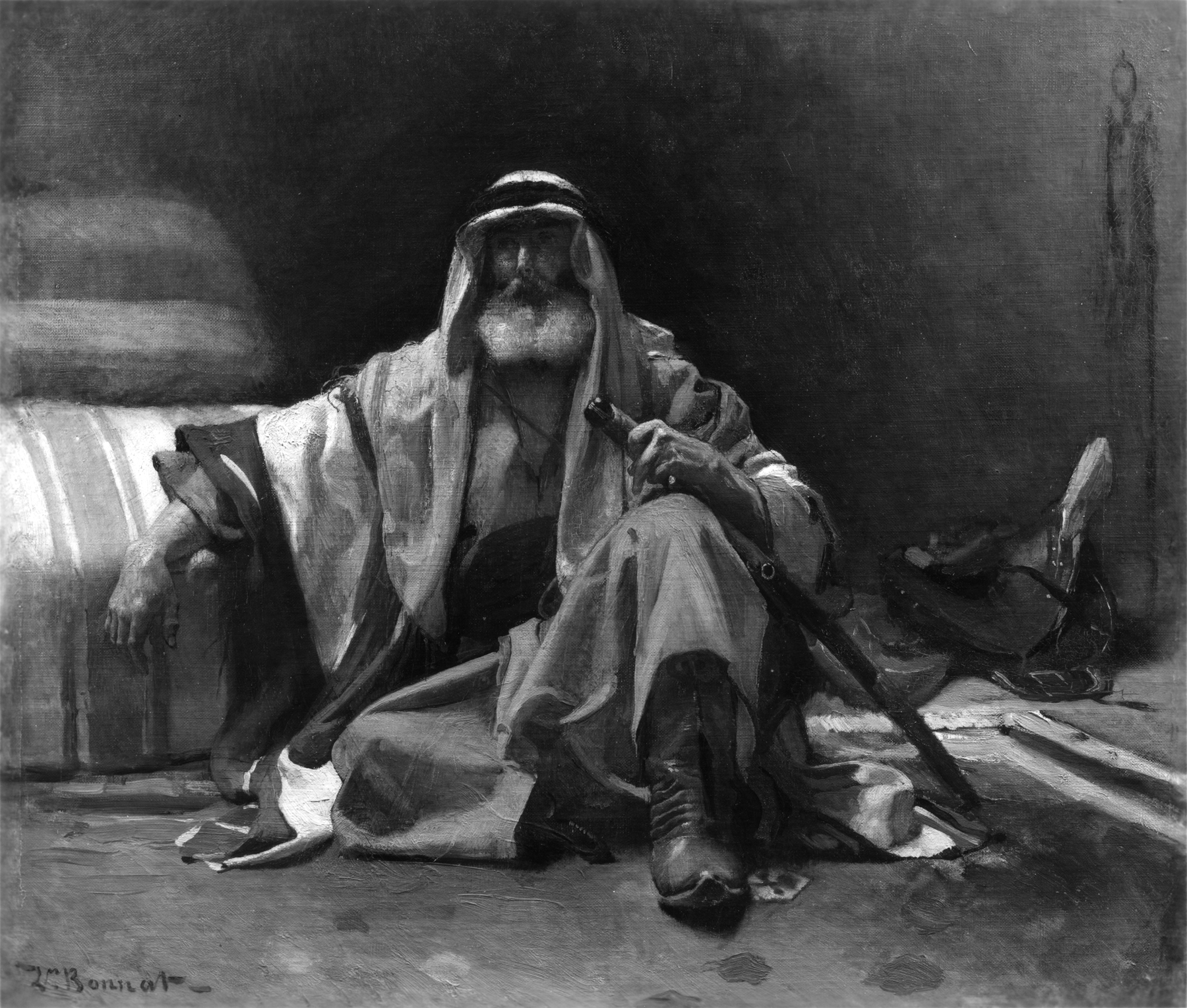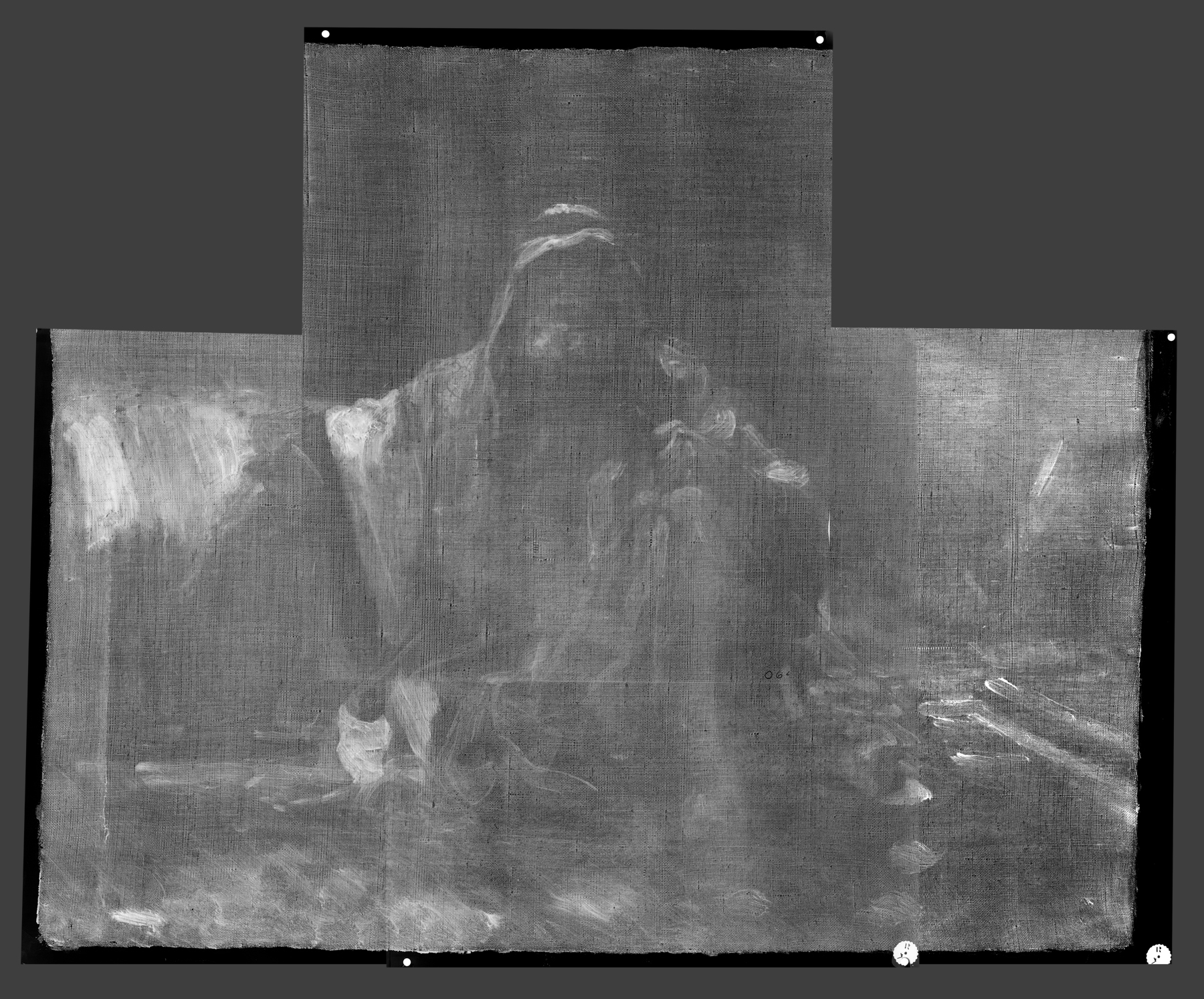An Arab Sheik
(18th and 19th Centuries )
During 1868–69, the artist Léon Bonnat traveled throughout Egypt and the Holy Land of the Bible’s Old and New Testaments. Despite having observed firsthand the people living in these regions, Bonnat’s painting of a sheik, painted on his return to France, reflects a limited view of Middle Eastern cultures. It is likely that Bonnat combined multiple sources in this work: a French model for the seated figure; objects, like the saddle, brought back from his travels or copied from books; and his sketched notations made while traveling. These sources were collaged together to create a painting that appears persuasively accurate, but was, nonetheless, very much the product of European stereotypes. For example, striking an imposing impression, the sheik holds a sword, which suggests his power is dependent on and maintained through force. It was a common stereotype that cultures in the Middle East and elsewhere were ruled by violence, in contrast to the supposedly more “civilized” societies of Europe and North America.
Bonnat was an influential teacher at the École des Beaux-Arts in Paris and included among his pupils Henri de Toulouse-Lautrec and Thomas Eakins.
Inscription
Provenance
Provenance (from the French provenir, 'to come from/forth') is the chronology of the ownership, custody, or location of a historical object. Learn more about provenance at the Walters.
Mary J. Morgan [date and mode of acquisition unknown]; Mrs. Mary J. Morgan Collection Sale, New York, March 3-8, 1886, no. 152; William T. Walters, Baltimore, 1886, by purchase [Lucas's letter to Walters dated 12/12/84 claims purchase date was 1885]; Henry Walters, Baltimore, 1894, by inheritance; Walters Art Museum, 1931, by bequest.
Exhibitions
| 2014-2016 | From Rye to Raphael: The Walters Story. The Walters Art Museum, Baltimore. |
| 1997-1998 | Orientalism: Delacroix to Klee. Art Gallery of New South Wales, Sydney; Auckland Art Gallery, Auckland. |
| 1982 | Orientalism: The Near East in French Painting 1800-1880. Memorial Art Gallery of the University of Rochester, Rochester; Neuberger Museum, Purchase. |
| 1967-1968 | The Master Artist. |
Conservation
| Date | Description | Narrative |
|---|---|---|
| 12/2/1962 | Treatment | lined; other; varnish removed or reduced |
| 4/25/1963 | Treatment | coated; inpainted; other |
| 1/13/1983 | Loan Consideration | examined for loan |
| 7/1/1992 | Examination | examined for condition |
| 8/18/1992 | Treatment | repaired |
| 7/14/1996 | Loan Consideration | examined for loan |
| 11/26/1997 | Loan Consideration | examined for loan |
Geographies
France, Paris
(Place of Origin)
Egypt (Place Depicted)
Measurements
H: 25 9/16 x W: 28 9/16 in. (65 x 72.5 cm); Framed H: 37 x W: 42 x D: 4 in. (94 x 106.7 x 10.2 cm)
Credit Line
Acquired by William T. Walters, 1886
Location in Museum
Not on view
Accession Number
In libraries, galleries, museums, and archives, an accession number is a unique identifier assigned to each object in the collection.
In libraries, galleries, museums, and archives, an accession number is a unique identifier assigned to each object in the collection.
37.173






